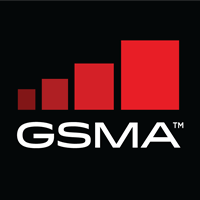GSMA

The GSM Association (commonly referred to as 'the GSMA') is a trade body that represents the interests of mobile operators worldwide. Approximately 800 mobile operators are full GSMA members and a further 300 companies in the broader mobile ecosystem are associate members. The GSMA represents its members via industry programmes, working groups and industry advocacy initiatives. It also organises the mobile industry’s largest annual exhibition and conference, the GSMA Mobile World Congress, and several other events.
The GSMA is headquartered in London with regional offices in Atlanta, Hong Kong, Shanghai, Barcelona, Brussels, Brasilia, Nairobi and New Delhi.
The Director General of the GSMA is Mats Granryd.[1]
History

The GSMA was formed in 1995 as the 'GSM MoU Association' as a body to support and promote mobile operators using the GSM mobile standard. It traces its history back to an MoU signed in 1987 by 13 operators in 12 countries that committed to deploying GSM for mobile services.[2]
Membership and governance
Full membership of the GSMA is open to licensed mobile operators using a GSM family technology. Approximately 800 such operators around the world are full GSMA members. Associate membership of the GSMA is open to non-operator companies active in the mobile ecosystem. These include handset and device makers, software companies, equipment providers and Internet companies, as well as organisations in industry sectors such as financial services, healthcare, media, transport and utilities. There are approximately 300 GSMA member companies in this category.
The GSMA board has 25 representatives from the world’s largest operator groups and selected smaller operators, and is elected bi-annually. Sunil Bharti Mittal, Founder and Chairman, Bharti Enterprises, is due to become GSMA Chair in January 2017, succeeding the incumbent Jon Fredrik Baksaas, former CEO of Telenor Group.[3]
Programmes and advocacy
The GSMA manages industry programmes in collaboration with its members with the aim of achieving scale and interoperability for new mobile technologies. It has four active programmes: Personal Data; Connected Living (focused on the Internet of Things); Network 2020 (promoting standards such as RCS and VoLTE); and Digital Commerce.
It also runs industry working groups covering areas such as roaming and interconnection, fraud and security, and intellectual property, as well as various other specialist committees and groups.[4]
The GSMA represents the mobile industry to governments and institutions where it advocates policy and regulatory positions on behalf of its members. Its stated goals in this area is to ensure that mobile telecoms "policy and regulatory frameworks are fair, flexible and future-proof"; that radio spectrum is made available for mobile services "in a timely and fair manner"; and to promote the use of mobile services in emerging markets.[5]
As part of its Industry Purpose programme, the GSMA is supporting the United Nations’ Sustainable Development Goals.[6]
Events
The GSMA Mobile World Congress is the largest annual exhibition and conference dedicated to the mobile industry, attracting more than 100,000 visitors in 2016.[7] The event was first held in 1987.
Since 2006 the event has been hosted in Barcelona and is currently located at the Fira Gran Via and Fira Montjuïc venues. The 2016 event retained a Guinness World Record as the largest carbon neutral trade show in the world.[8]
In addition to Mobile World Congress, the GSMA organises ‘Mobile World Congress Shanghai’ in Shanghai; ‘Mobile World Congress Americas’ in San Francisco (beginning 2017[9]); and the Mobile 360 Series of regional conferences.
TAC/IMEI database
The GSMA is the global administrator of Type Allocation Code (TAC), which is used to create the IMEI number that can uniquely identify wireless devices.
It allocates official IMEI number ranges to all manufacturers of 3GPP compliant devices and records these ranges and device model information in a database. It offers a device look up and identification service based on this database that allows authorised third-party organisations to identify the manufacturer and model of a mobile device using the IMEI.
References
- ↑ "GSMA appoints Mats Granryd as new director general". The Register. Retrieved 25 August 2015.
- ↑ "Happy 20th birthday, GSM". ZDNet. Retrieved 7 September 2007.
- ↑ "Sunil Bharti Mittal elected as GSMA Chairman". Business Standard. 27 October 2016.
- ↑ "Working groups". GSMA.
- ↑ "GSMA Annual Report 2017".
- ↑ "New mobile app launches to drive action on Sustainable Development Goals". United Nations. Retrieved 18 September 2016.
- ↑ "Mobile World Congress visitors surpass 100,000 for the first time". Mobile News. 25 February 2016.
- ↑ "GSMA Mobile World Congress 2016 certified as carbon neutral". GSMA Newsroom. 22 July 2016.
- ↑ "Mobile World Congress Americas to launch in the US in September 2017". Android Central. 22 June 2016.
External links
- GSMA official website
- Mobile World Live - GSMA news service
- GSMA Intelligence - mobile data and statistics
- GSMA Global Mobile Awards
GSMA Events
- GSMA Mobile World Congress
- GSMA Mobile World Congress Shanghai
- GSMA Mobile World Congress Americas
- GSMA Mobile 360 Series